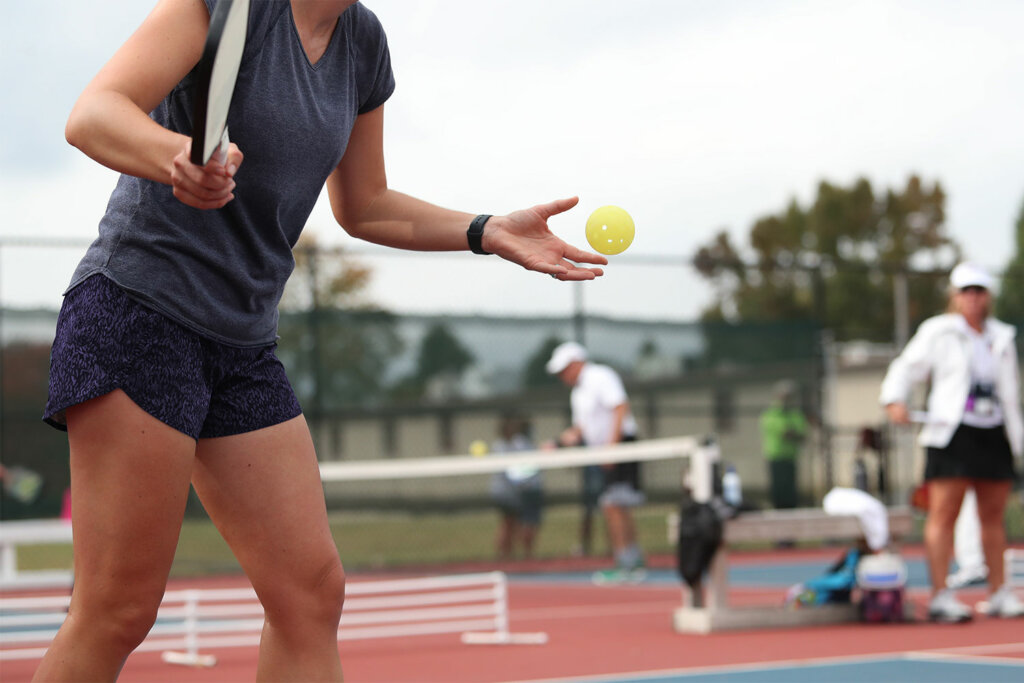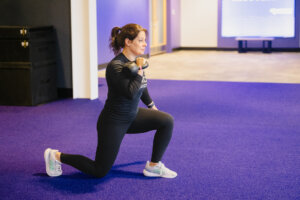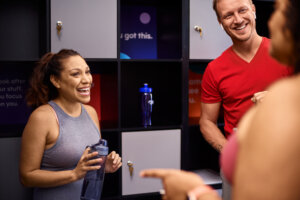Did you know? Pickleball is the fastest-growing sport in America. With more than 4.8 million players in the U.S., it grew 39.3% from 2020 to 2022.
Okay, but what is pickleball? Think of it as a cross between tennis, badminton and table tennis. Invented in 1965 in Bainbridge Island, Washington, pickleball is now played in more than 25 countries.
So, what’s the big deal? Well, the rapid growth of this fast-paced game is no surprise. It’s easy to learn, requires minimal equipment and is low impact, making it suitable for players of all ages and abilities.
Want in on the action? We’ve broken down the basics of the game and the equipment you need—and even included workouts you can do to gain a competitive edge.
How to Play Pickleball: The Equipment
Getting started with pickleball is simple—you only need a few pieces of equipment:
- A paddle
- A pickleball
- A pickleball net (different from tennis, this net is 36” tall on the sides and 34” tall in the middle
- A court
- Your favorite pair of sneakers
The game is played on a 44-foot-by-20-foot court that’s divided into two equal sides by a net. A center line divides each side into a left and right service court, and the non-volley line — which is 7 feet off the net on either side — creates an area called the kitchen. The baseline and sideline serve as the outer boundaries of the court.
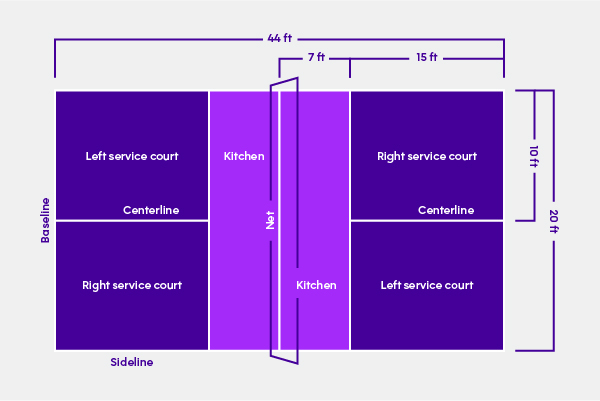
Need a space to play? Search for a court near you here.
How to Play Pickleball: The Rules
Pickleball can be played as singles (one on one) or doubles (teams of two), but both versions use the same rules and court space. We broke the rules down into a few basic sections:
Scoring
Scoring is simple: Points may only be scored by the serving team. A rally ends when a team commits a fault like hitting the ball into the net or out of bounds — or letting the ball bounce twice on their side of the court.
Note: A ball is considered “in” if it contacts any part of any line. The exception is the non-volley zone line; if a serve touches the non-volley line, a fault occurs.
When a fault occurs, play stops. If the receiving team committed the fault, the serving team receives a point. If the serving team committed the fault, they lose the serve — this is called a side out.
The Serve
In pickleball, players must use an underhand motion to serve the ball cross-court into the opposing team’s service court. Note: The serve cannot land in the kitchen, and each server only gets one attempt.
Both players on a doubles team may serve and score points until a fault is committed. The first serve of each side out should be made from the right service court. If the serving team scores a point, the server switches sides and serves from the left service court. The server continues to switch sides after every point until a fault is committed. Once the first server is done, their partner takes over the serve. The process repeats when the opposing team sides out.
In singles, the server serves from the right court when their score is even and from the left when their score is odd.
The Kitchen
The kitchen, or the non-volley zone, is the area within 7 feet of the net on either side. Players may not hit the ball while they are standing in the kitchen unless the ball has already bounced on their side once. If a player strikes the ball in the kitchen before it bounces, the play ends.
The Two-Bounce Rule
The last critical rule of pickleball is the two-bounce rule. When a ball is served, each team must let the ball bounce once on their side of the court before returning it over the net.
After the ball has bounced twice — once on either side — players may volley the ball in the air or play it off a bounce.
For a more detailed overview of the game, review the official pickleball rulebook.
How to Improve Your Pickleball Game
Once you’ve got a handle on the basics, it’s time to bring your game to the next level.
How? Try strength training. It does more than make you buff; proper strength training can also help correct muscle imbalances, improve your posture, increase joint stability, manage weight, enhance your coordination and prevent injury. Strength training is an essential aspect of any exercise regimen — especially for those looking to boost their athletic performance.
Try these strengthening exercises to enhance your pickleball skills.
Lunges
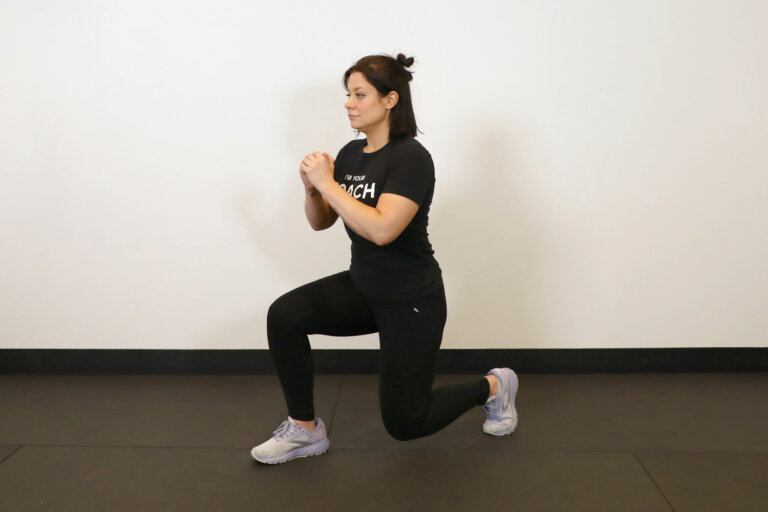
Pickleball is a fast-paced game, which means you need strong legs to quickly move around the court. What better way to build strength in your glutes, quads, hamstrings and calves than a Forward Lunge? It can not only increase your explosive power but also boost stability and mobility.
Here’s how to perform a Forward Lunge:
- Start in a tall standing position with your feet hip-width apart.
- Step one foot forward and bend both knees until they are at a 90-degree angle. Make sure to engage your core muscles to remain balanced; don’t extend your front knee past your toes.
- Keep your chest tall and your weight on your front leg.
- Press through your front foot and push up to return to the starting position.
Complete 2-3 sets of 8-10 reps.
Bent-Over Rows
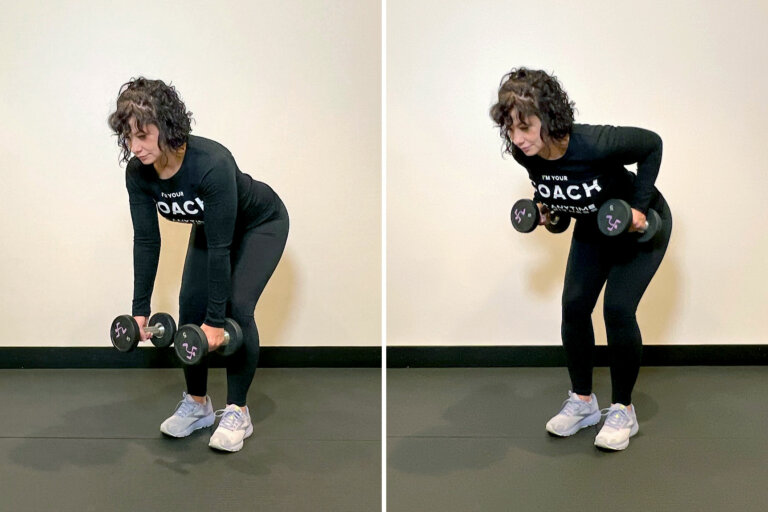
Bent-Over Rows target your back muscles, biceps and forearms while boosting your core and spinal strength. The benefits: A stronger hitting arm and more stability as you swing the paddle.
Use these steps to complete a Bent-Over Row:
- Hold a light weight in each hand. Stand with your feet shoulder-width apart and knees slightly bent.
- Hinge forward with your hips and engage your core to keep your back flat.
- Raise your elbows toward the ceiling and squeeze your shoulder blades together, pulling the dumbbells to the side of your torso.
- Slowly lower the dumbbells back to the starting position.
Perform 2-3 sets of 6-12 repetitions, or go until failure.
Planks
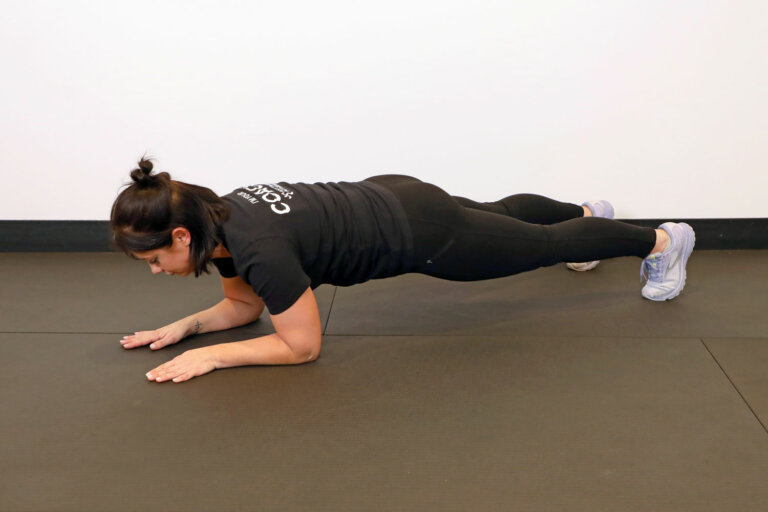
Want to target your core, back, shoulders and legs all at the same time? A Forearm Plank will get the job done. The best part? Planks don’t require any equipment, so you can work to improve your pickleball game anywhere, anytime.
Use these tips to master the Forearm Plank:
- Lay on the floor on your stomach.
- Raise yourself onto your forearms, with your elbows directly beneath your shoulders and palms flat.
- Keep your legs out straight with your back and bottom flat.
- Use your abs and glutes to keep your hips in line with your shoulders, forming a straight line with your body.
- Hold the position for 30 seconds, or until failure.
Repeat the plank exercise 4–5 times.
Push-Ups
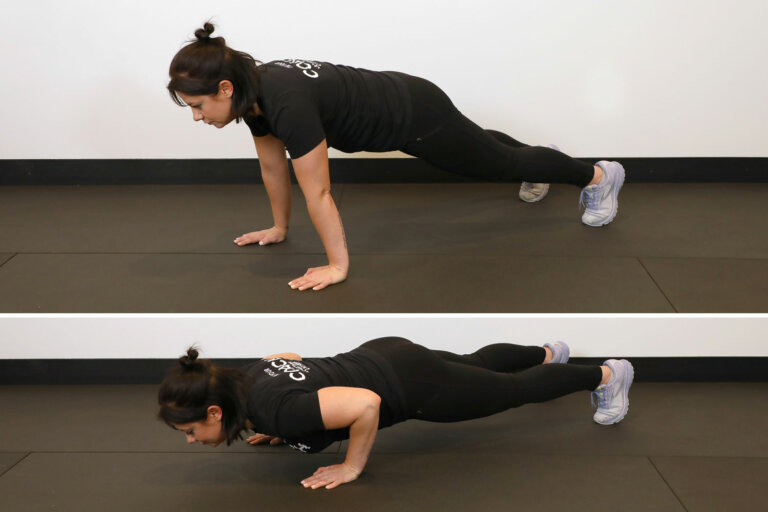
Similar to a Plank, Push-Ups work your core and upper body muscles — including your chest, arms and shoulders — to boost your overall athletic performance.
To complete a Push-Up, follow these steps:
- Begin by supporting yourself on your toes and hands, with your elbows bent at a 90-degree angle and chest nearly touching the floor. Your hands should be shoulder-width apart.
- Push up to a straight arm position, bracing your core and glutes.
- Lower your body back to the start position and repeat.
Remember: Keep your back flat and your hips in line with your shoulders throughout. Form a straight line with your body, from your head to your heels.
Complete 2–3 sets of 8–10 reps.
NOTE: If Push-Ups are difficult, use these exercises to work your way to your first Push-Up.
With that, you’re ready to pick up a paddle and give this fast-growing sport a try! Still not convinced? Check out the six health benefits of playing pickleball.
